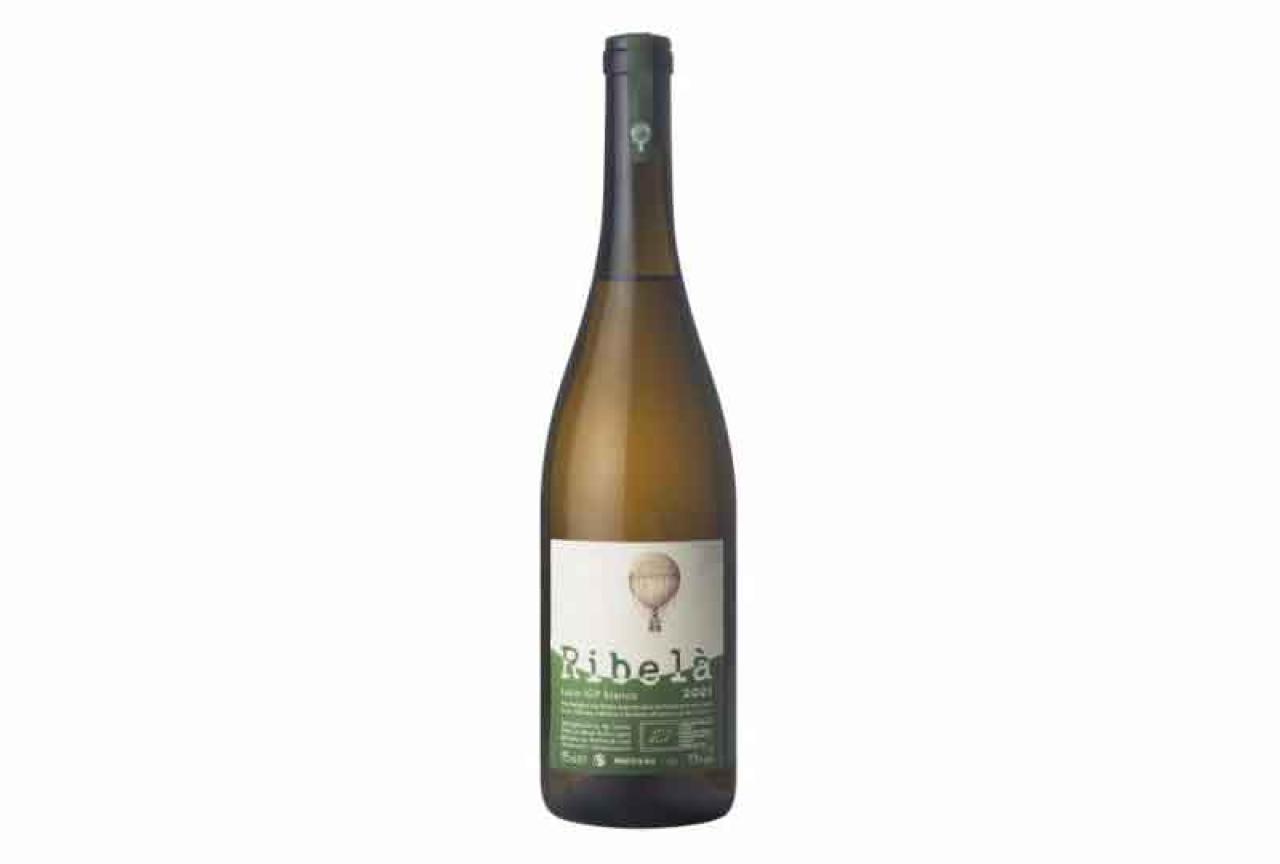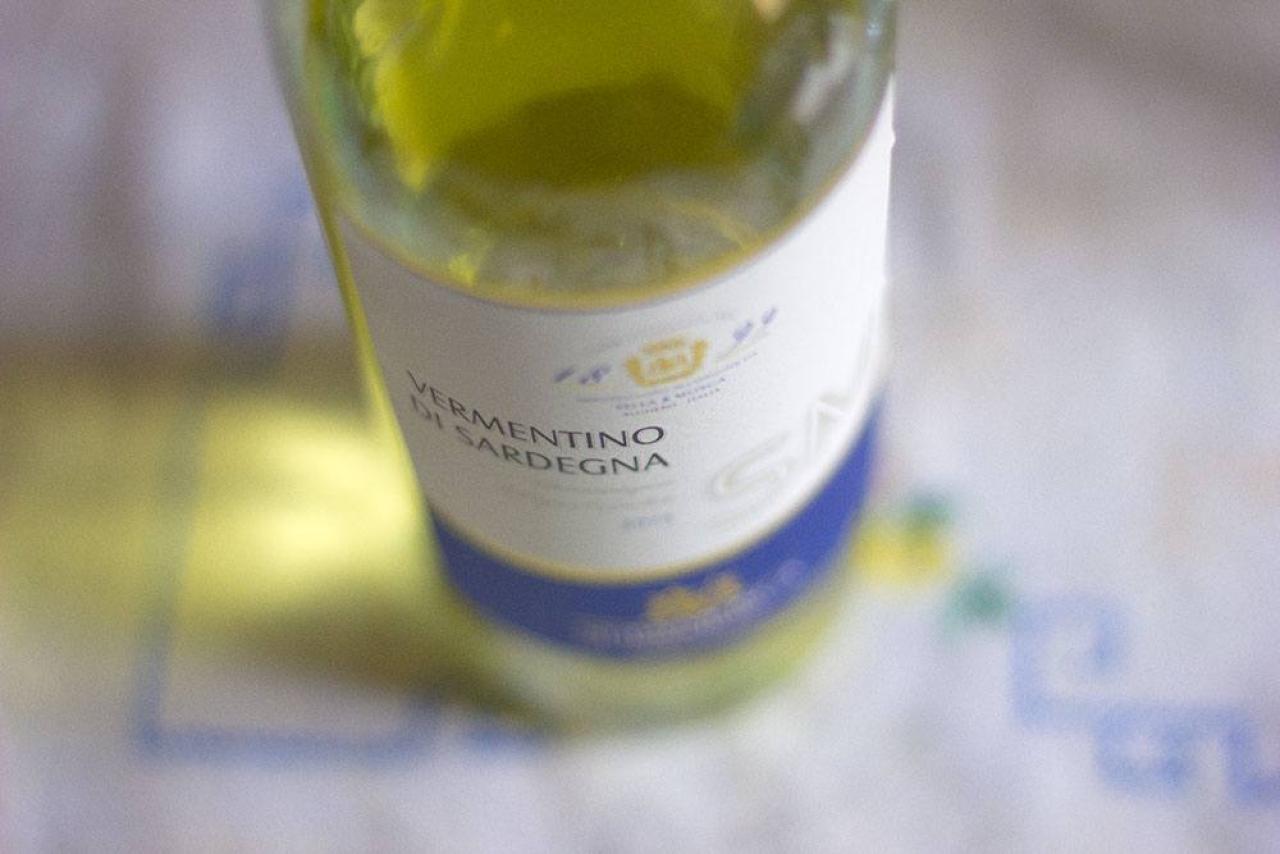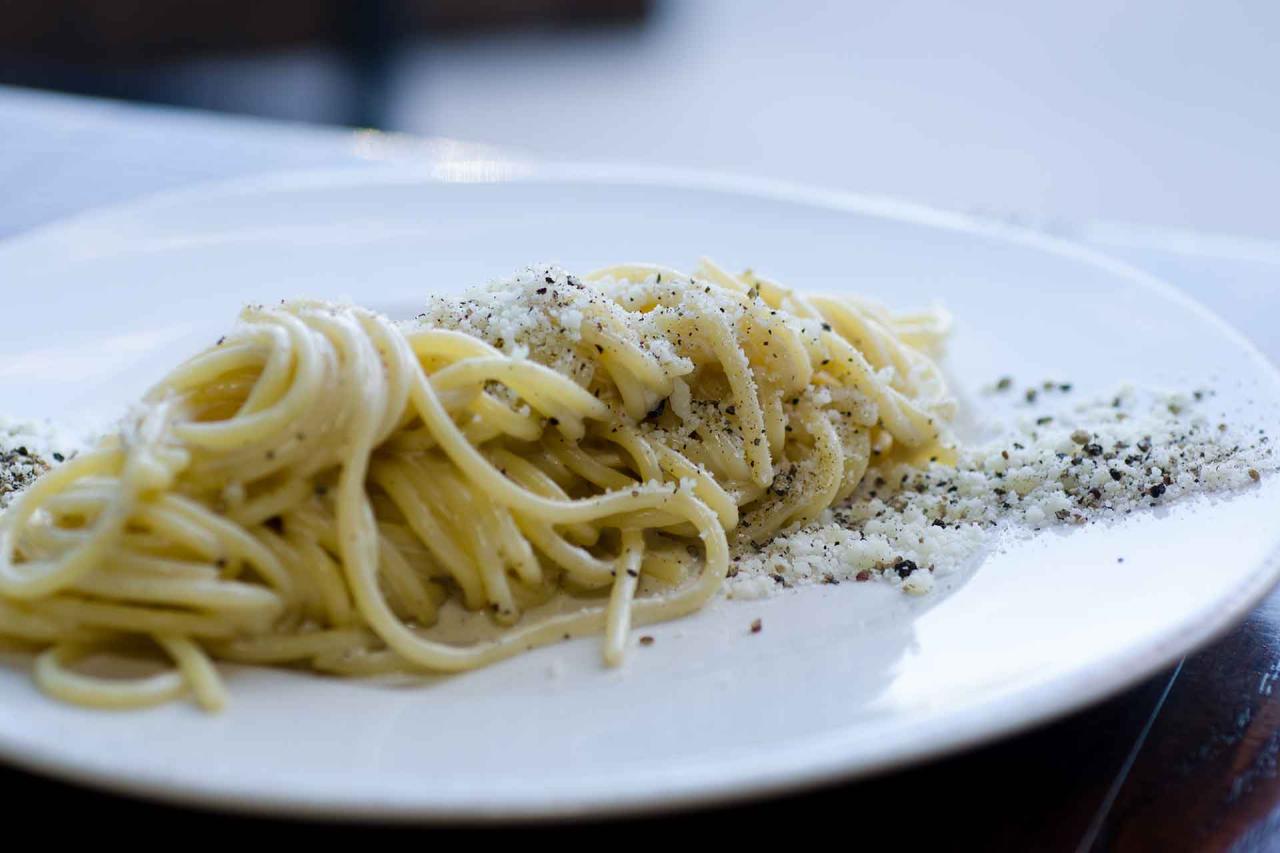One of those dishes like Carbonara and Amatriciana that you absolutely must taste when visiting the capital.
Its origins have always been associated with the shepherds of Lazio who, being forced to leave home for a long time, used to fill their saddlebags with pieces of aged cheese (Pecorino, in fact), pepper and pasta, ingredients that kept well over time and allowed them to have long-term supplies.
The secret of the success of this recipe lies both in the choice of quality ingredients and in the creaming process. You need to know how to dose the cooking water with the pecorino, absolutely avoiding the use of butter, cream, or oil, as they are not included in the original recipe. It is a very simple dish but requires the right attention for a perfect result.
In this article, we will not give you the best recipe (for that there are more specific sites than ours) but we will talk about its taste, and the best Cacio e Pepe wine pairing, to be able to enjoy this delicious dish at its best.
Cacio e Pepe wine pairing: the basics
But let's get to the point: what are the ingredients needed to prepare this dish, and how does it taste?
First of all, Pecorino Romano is the true and only undisputed protagonist of the recipe. Better to prefer a medium-aged pecorino, given that the more seasoned the cheese is, the more it will need high temperatures to melt and form the famous cream.
As always, the choice of pasta format divides opinions. Some make it a traditional matter and prefer spaghetti or tonnarelli. Others prefer rigatoni or any other type of short pasta, capable of capturing the sauce in the best possible way. Whatever the choice, Cacio e Pepe, pasta will balance the pungency of the other ingredients. And then of course there's the freshly ground pepper.
The result is a very tasty dish that mixes the strong flavor and sapidity of the pecorino with the spiciness of the pepper and the light sweetness of the pasta.
And, in terms of wine, what goes with Cacio e Pepe? The best wine pairing for Cacio e Pepe must therefore be with a full-bodied and round white, following the flavor of the dish, or a red with a medium/light body and with light tannins but with some spicy nuances to accompany the rusticity of the flavors.
Get updates on the latest posts and more from Wine Bugle straight to your inbox.
Best wine for Cacio e Pepe

As we always like to specify, there are no absolute rules in pairing food and wine. But, of course, there is a successful tradition of creating wine and food pairings in a territorial way.
For example, Cacio e Pepe pasta lends itself very well to pairing with some white wines from Lazio, especially those based on Malvasia. These wines usually have the right thickness and softness for a rustic and tasty dish like Cacio e Pepe.
Our suggestion: Pentima Bianco Ribelà
White wine with Cacio e Pepe
As a general rule, the ideal wine pairing for Cacio e Pepe calls for a soft wine on the palate that allows for dampening the spicy notes, and can create the right balance. The best white wine to pair with Cacio e Pepe will show an aromatic character and will be able to perfectly contrast the flavors of the dish and offer freshness to the palate.
Malvasia
Malvasia is not just one vine, but a real family of vines, made up of 17 varieties distributed throughout Italy, and above all in Sardinia, Tuscany, Lazio, Friuli Venezia Giulia, Emilia-Romagna, Calabria, and Puglia.
The different Malvasias have slightly different characteristics depending on the terroir and the specific variety, but they share an intense and complex olfactory profile characterized by a spicy fragrance of musk and apricot and varietal notes of ripe white fruit. On the palate, they show a good softness and aromatic persistence and make them ideal for a tasty wine pairing Cacio e Pepe.
Malvasia Bianca di Candia, in particular, widely cultivated in Lazio, produces wines endowed with fruity and floral sensations with mineral notes on the finish and a good freshness and consistency which can well balance the long savory trail of this recipe.
Our suggestion: Vino Bianco “Malvasia Bianca di Candia”, Il Sambuco

Vermentino
When looking at what to pair with Cacio e Pepe, the ideal white wine will need a good structure and aromatic persistence to stand in comparison with a dish with strong flavors, such as Vermentino di Sardegna.
Vermentino is one of the great Italian white grape varieties, widespread on the Tyrrhenian coast. It produces wines with a good body, very fresh, and with an excellent structure which is always very balanced and which comes from the great sapidity and minerality of the wine.
With its floral scents and fruity notes with hints of sweet spices, Vermentino is the most suitable choice to delicately accompany the creamy and velvety taste of Cacio e Pepe.
Our suggestion: Vermentino di Sardegna DOC "Tarra Noa" 2021 - Saraja
Pecorino
Widespread in Abruzzo and the southern part of the Marche region, Pecorino is a native vine that produces fresh and sunny wines, very sapid, and endowed with depth and character.
Its structure is remarkable, and the olfactory profile reveals very marked and clear herbaceous and ripe fruit aromas.
The decisive savory-acid boost of this delicious white wine makes it ideal with the pungency of the dish. Its aromas accompany the creamy texture of the dish with delicacy and persistence.
Our suggestion: Abruzzo Pecorino DOC "Castello di Semivicoli", Masciarelli
Red wine with Cacio e Pepe
Provided it is light and medium-bodied, red wine can match very well with Cacio e Pepe, accompanying the dish without covering its pronounced aromas.
The ideal wine pairing with Cacio e Pepe will therefore be characterized by a fruity and slightly spicy aromatic bouquet, as well as by velvety tannins so as not to cover the taste of the dish or excessively dampen its flavor.
Pinot Noir
A vine of French origin, famous for the exceptional quality wines from Burgundy and Champagne, Pinot Noir is now an international variety that produces excellent wines also in the rest of Europe. In Italy, Pinot Noir has adapted well to the terroir and climate of Oltrepò Pavese and South Tyrol but also in some areas of Tuscany, in the Marche and Veneto.
Pinot Noir, from South Tyrol, has exactly the right complexity and finesse for a Cacio Pepe wine pairing. Its tannins are always delicate and velvety. The body is quite light. Its aromas are fresh and intense with lively fragrant notes of strawberries, red berries, and light spicy notes that will fill the nose and mouth harmoniously with the pungency of the pepper and the flavor of the cheese.
Our suggestion: Alto Adige Pinot Nero DOC, San Michele Appiano
Sangiovese
Sangiovese is the king of Italian grape varieties. Grown almost everywhere on the peninsula, it is the grape that produces some of the most famous Italian wines in the world, including Brunello di Montalcino.
Sangiovese-based wines can have different characteristics based on the area of origin, the clone used, and the age. The younger wines are characterized by a not-too-robust body and a marked acid vein which makes them particularly versatile.
Floral, soft, and balanced, Sangiovese especially if young and from Emilia Romagna, has the right acidity to cleanse the palate and a body that is not too overwhelming for the decisive flavors and the not-too-invasive structure of the pasta.
Our suggestion: Rubicone Rosso IGT "Aulente rosso", San Patrignano
Valpolicella
In the search for what wine goes with Cacio e Pepe, a lively red may be the right answer. Valpolicella is a very lean, fresh, fragrant, dry, and pleasant medium-bodied red wine, produced with Corvina, Corvinone, Rondinella, and Molinara, the indigenous grapes of the province of Verona.
The younger wines have good acidity, very mild tannins, and a lightness of body that make them perfect with Cacio e Pepe pasta. The fresh and light aromas of berries, flowers, and Mediterranean herbs and the spicy nuances enhance the flavors of the dish.
Our suggestion: Valpolicella Superiore DOC, Musella
Etna Rosso
Produced on the slopes of the Etna volcano from the native Sicilian vines Nerello Mascalese and Nerello Cappuccio, Etna Rosso is a wine of great elegance with enveloping vinous aromas, which are mixed with fruity, mineral, and spicy notes.
However, its elegant character must not deceive: Etna Rosso is a wine with a character that vaguely recalls Pinot Noir, but with a distinctive minerality, linked to its terroir of origin.
The Cacio e Pepe pasta needs a fragrant and spicy wine, with delicate tannins and a dry palate and the moderate structure of Etna Rosso can enhance this dish with elegant harmony.
Our suggestion: Etna Rosso DOC "Contrada Monte Gorna", Nicosia
Conclusions
A typical dish of the Lazio and Roman tradition, despite its simplicity, pasta Cacio e Pepe is a rustic recipe with strong flavors. In our article, we have given you extensive advice on the best Cacio e Pepe wine pairing with both white and red wines.
So what are you waiting for? Get in the kitchen and enjoy this tasty recipe with a nice glass of your favorite wine.
Photo credits Kurman Communications, Wine Dharma

